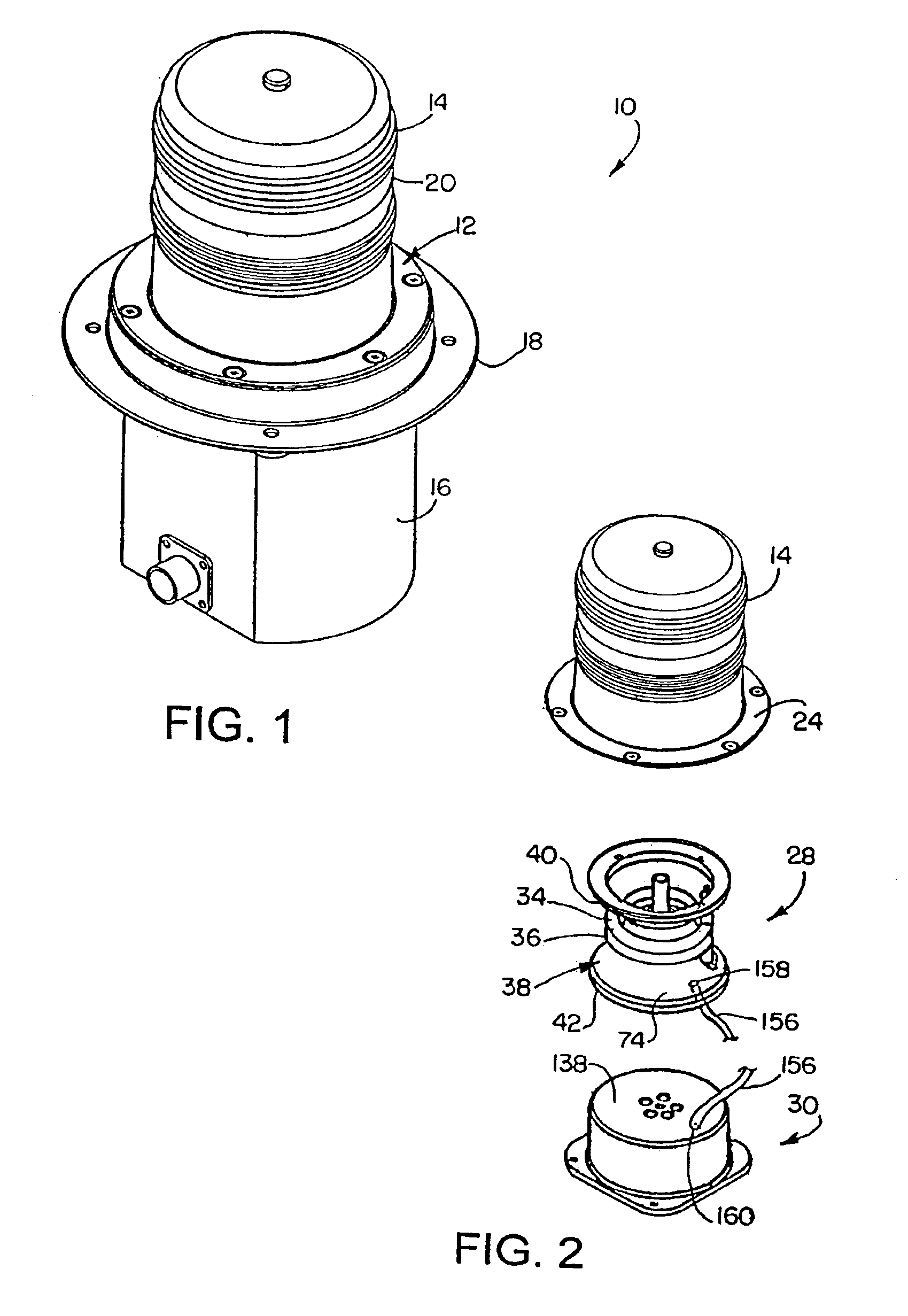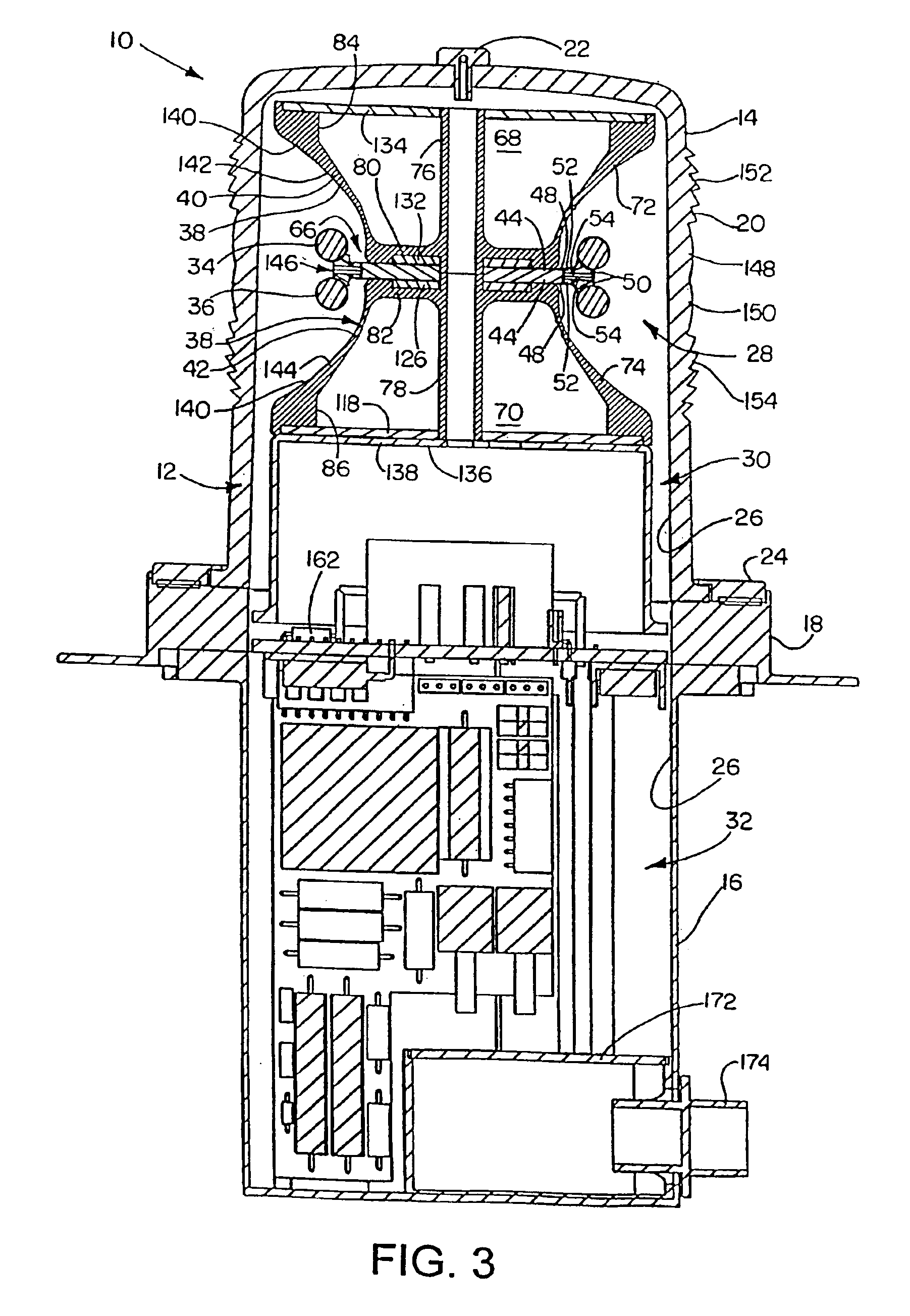Recognition/anti-collision light for aircraft
a technology of anti-collision light and recognition/anti-collision light, which is applied in the direction of landing aids, lighting support devices, instruments, etc., can solve the problems of falling below the minimum intensity requirements and the light intensity of the flashtube gradually degrades with use, so as to extend the overall useful life of the light, extend the life of a single flashtube or multiple flashtubes
- Summary
- Abstract
- Description
- Claims
- Application Information
AI Technical Summary
Benefits of technology
Problems solved by technology
Method used
Image
Examples
Embodiment Construction
[0023]Referring now in detail to the drawings, and initially to FIGS. 1-3, a light constructed in accordance with the present invention is generally indicated at reference numeral 10. The light 10 was developed for use as an aircraft recognition / anti-collision light and is herein described chiefly in this context. However, those skilled in the art will appreciate that a light according to the invention will have other useful applications including but not limited to uses in other types of vehicles, in industrial applications, etc. It should be appreciated that such alternative applications are contemplated as falling within the scope of the present invention. It also should be appreciated that references herein to top and bottom, upper and lower, etc., are made in relation to the illustrated orientation of the light to describe positional relationships between components of the light and not by way of limitation, unless so indicated. Also, the terms “recognition” and “anti-collision...
PUM
 Login to View More
Login to View More Abstract
Description
Claims
Application Information
 Login to View More
Login to View More - R&D
- Intellectual Property
- Life Sciences
- Materials
- Tech Scout
- Unparalleled Data Quality
- Higher Quality Content
- 60% Fewer Hallucinations
Browse by: Latest US Patents, China's latest patents, Technical Efficacy Thesaurus, Application Domain, Technology Topic, Popular Technical Reports.
© 2025 PatSnap. All rights reserved.Legal|Privacy policy|Modern Slavery Act Transparency Statement|Sitemap|About US| Contact US: help@patsnap.com



